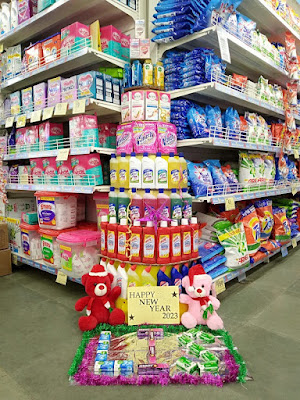Types of Store Audits You Should Perform!
THERE ARE THREE TYPES OF STORE AUDITS EVERY RETAILER SHOULD CONDUCT.
Every retailer should perform store audits because they help you uphold corporate standards, enhance operations, and promote a secure shopping environment. But what kinds of store audits should you act, how frequently should you do them, and most importantly, how can you ensure they are done correctly?
MATERIALS AUDITS.
In a retail environment that is changing quickly and becoming more competitive, properly executed merchandising audits—traditionally viewed as table-stake activities—can help drive differentiated approaches.
Additionally, according to Chio, top brands and retailers discover ways to use this information from the front-line merchandising audit as crucial actionable insights for the company.
LEADING METHODS FOR RUNNING MERCHANDISING AUDITS.
Chio provided the following advice for in-store merchandisers in response to a question about best practices to make sure their audit goes smoothly:
THEN WALK A PERIMETER -
From the standpoint of a merchandiser, the first action is to perform a perimeter walk, he claims. This involves quickly reviewing the website to see if the products and promotions are correctly presented.
EVALUATE STOCK LEVELS -
Merchandisers evaluate stock levels while walking around the perimeter, says Chio. Now that the store shelves and displays have been visually inspected, merchandisers should decide whether they are sufficiently stocked.
ENSURE PRODUCTS ARE MERCHANDISED AND STOCKED CORRECTLY.
The third step entails going to the back room and removing the items that must be placed on the floor. Merchandisers will then proceed to the sales floor, place items on the shelves, and ensure that promotions and displays are merchandised appropriately following the CPGs' instructions, which are frequently contractual obligations between the brand and the retailer. ".
AUDITS FOR SAFETY AND HEALTH.
In addition to keeping you compliant and shielding you from claims, lawsuits, and other hassles, conducting health and safety audits motivates your staff to behave appropriately, as Gary Johnson, Senior Consultant at Prevention Advisors, points out.
BEST PRACTICES FOR HEALTH AND SAFETY AUDITS.
Johnson provided several pointers for conducting health and safety audits. They comprise:
Johnson advises conducting health and safety audits every three months. Suppose your company has complicated security and health issues, such as hazardous materials, hazardous equipment, or high shelving in your stores. In that case, consider performing them more frequently.
TELL YOUR AUDITORS THE TRUTH -
Audits should call out compliance versus non-compliance, and whether something works or doesn't, he continues. The audit should accurately reflect the situation at hand so that it can be fixed.
It's good to find website problems. It is better to have them fixed.
FILE A SAFETY COMMITTEE INTO CONSIDERATION.
Initiating a safety committee, he continues, sends the message that maintaining people's health and safety is everyone's responsibility, not just that of management. From a peer pressure perspective, it keeps everyone involved. They can self-police when they observe a coworker misbehaving.
LOSS PREVENTION AUDITS.
Audits of loss prevention can lessen shrinkage-causing theft, fraud, and administrative problems. Here are a few of Johnson's tips for conducting effective loss prevention audits.
BEST PRACTICES FOR RUNNING AUDITS FOR LOSS PREVENTION.
Successful retailers are moving the audits out into the open and are making the process transparent.
LOOK AT THE AUDIT FROM YOUR CUSTOMER'S POINT OF VIEW -.
Johnson advises retailers to "use the audit to view the store 'as a customer does' and review all aspects of the customer touchpoints."
In light of this, you can start the audit by examining the parking lot, lighting, signage, and window display outside the store. Once inside, proceed like a customer and assess the housekeeping, merchandise, and customer service (i.e., welcome, assistance, speed of checkout, and accuracy).



Comments
Post a Comment